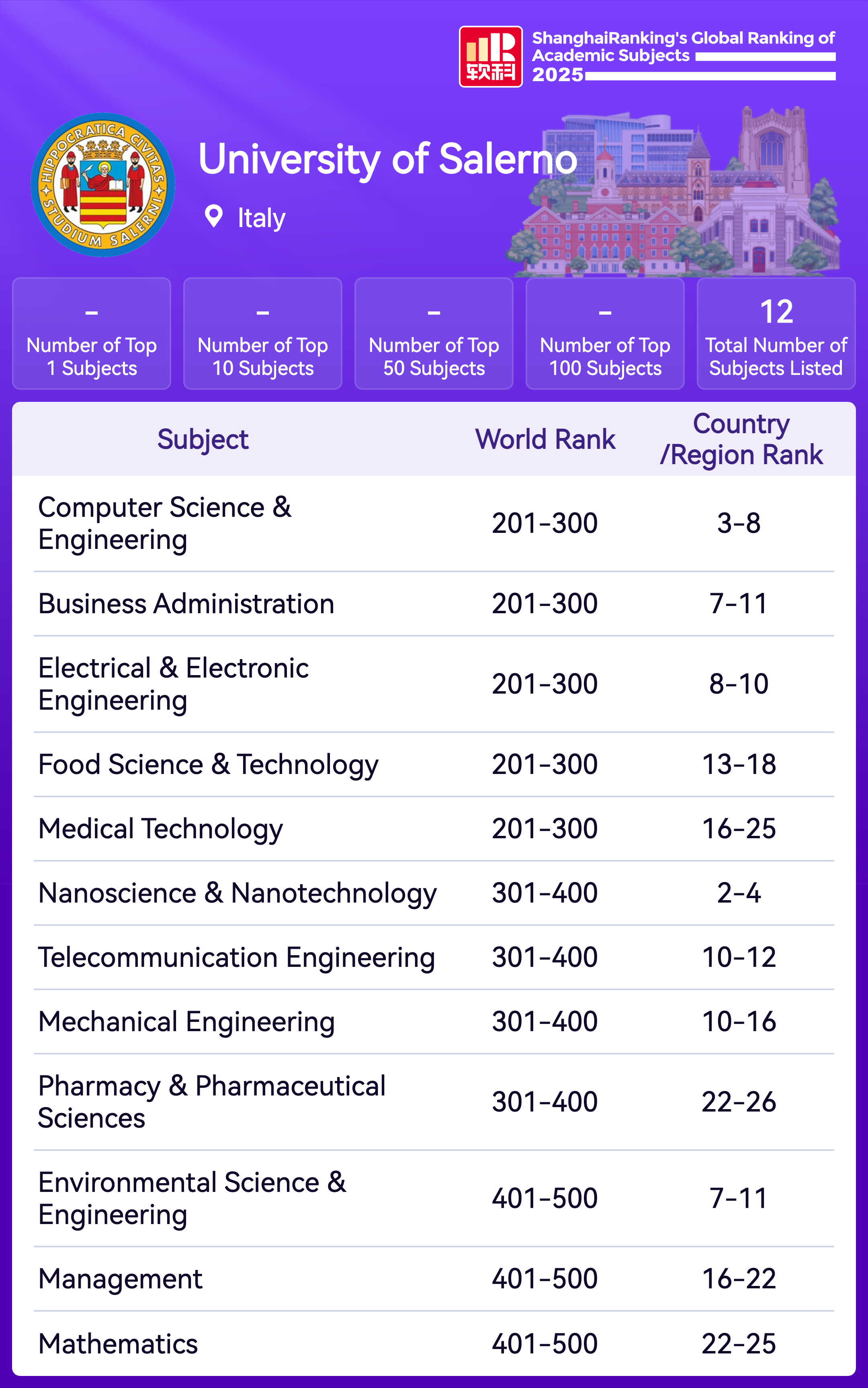 601-700
601-700 


The University of Salerno is ideally linked to the oldest academic institution in the Old Continent: the Schola Medica Salernitana. Founded in the eighth century AD, the School reached its peak between the 10th and 13th century. In addition to medicine, its lectures included philosophy, theology and law. Closed by royal decree in 1811 under Joachim Murat’s Napoleonic government, the School earned Salerno the title of Hippocratica Civitas (City of Hippocrates) after the famous Greek physician and treatise writer. In 1944, by decree of king Victor Emmanuel III, the Istituto Universitario di Magistero “Giovanni Cuomo” was founded. This became state-owned in 1968, changing its name into Facoltà di Magistero dell’Università degli Studi di Salerno. Within a few years, the Faculty was joined by many others which contributed to the formation of a major university. The Faculty of Arts was established in 1969; then the Faculty of Economics (1970); the Faculty of Mathematical, Physical and Natural Sciences and the Faculty of Law (1972); the Full Degree in Engineering (1983); the Faculty of Pharmacy (1991); the Faculty of Political Science (1992); the Faculty of Foreign Languages and Literature (1996); finally, the Faculty of Medicine and Surgery (2006). As of 2013, in accordance with Law 240/2010, the faculties have been reorganized, the departments reconfigured and their respective functions redesigned. The University – which currently counts around 40,000 students – has a very large catchment area including, beside Campania, the Italian regions of Basilicata, Calabria and Apulia. Since 1987, the University has had its headquarters in the Irno Valley, a few kilometers from Salerno, at the junction of motorway intersections that make it central and easy to reach. Organized in the form of a campus (the Fisciano and Baronissi campuses), the University boasts modern facilities and efficient services for orientation, teaching, studying and leisure. It is a very large and still expanding complex, which covers an area of about one hundred thousand square meters. Modern service centres – such as libraries, the International/Erasmus Office, the University Language Centre, the University Centre for Orientation and Mentoring, the Placement Office, the Spin-Off Incubator – represent vital and valuable support for training. Furthermore, the Campus offers many other services such as residence halls for students and teachers, sports facilities, an indoor swimming pool, a theatre, a lecture hall, a nursery, open-air museum of contemporary art, parking areas, green areas and a thematic arboretum, thus providing a student-friendly environment to facilitate the entire academic journey. Thus, from traditionally being a place for integration of learning, the University becomes a place for integration of projects, cultures and - above all – people, by constantly encouraging study, research and life experiences to enhance cultural and human growth. The mission of the University of Salerno is to carry out research and educational programmes, developing links with the surrounding area while respecting the environment, with the aim of creating, enriching and, at the same time, offering a scientific, cultural heritage to students, enterprises, institutions and in general to the whole community. In keeping with this mission and core values, which are a constant reference point, the institutional goals are as follows: Research, Teaching and Education, Support for outstanding students and the diversely able, Development of the Campus as a community of individuals who share the same interests and values, Development of links with key players in the local area.
 601-700
601-700 
| Subject | Rank |
|---|---|
Electrical & Electronic Engineering | 201-300 |
Computer Science & Engineering | 201-300 |
Food Science & Technology | 201-300 |
Medical Technology | 201-300 |
Business Administration | 201-300 |
Mechanical Engineering | 301-400 |
Telecommunication Engineering | 301-400 |
Nanoscience & Nanotechnology | 301-400 |

